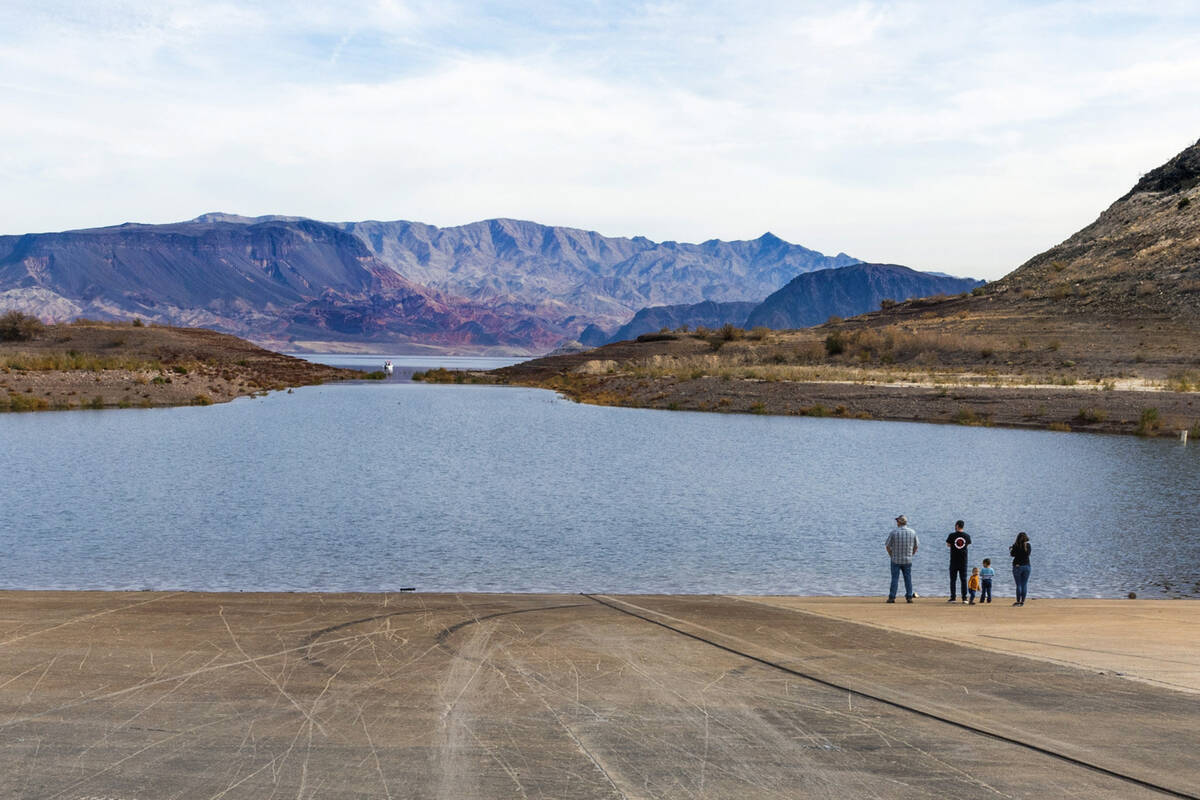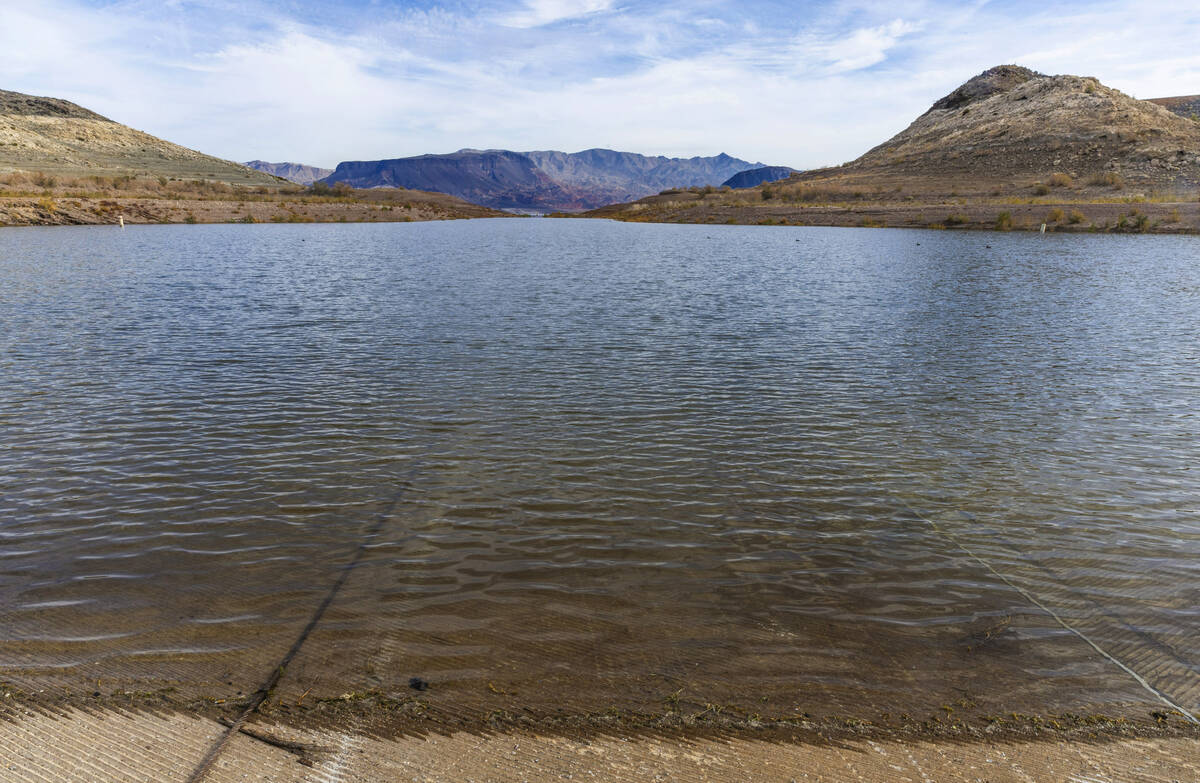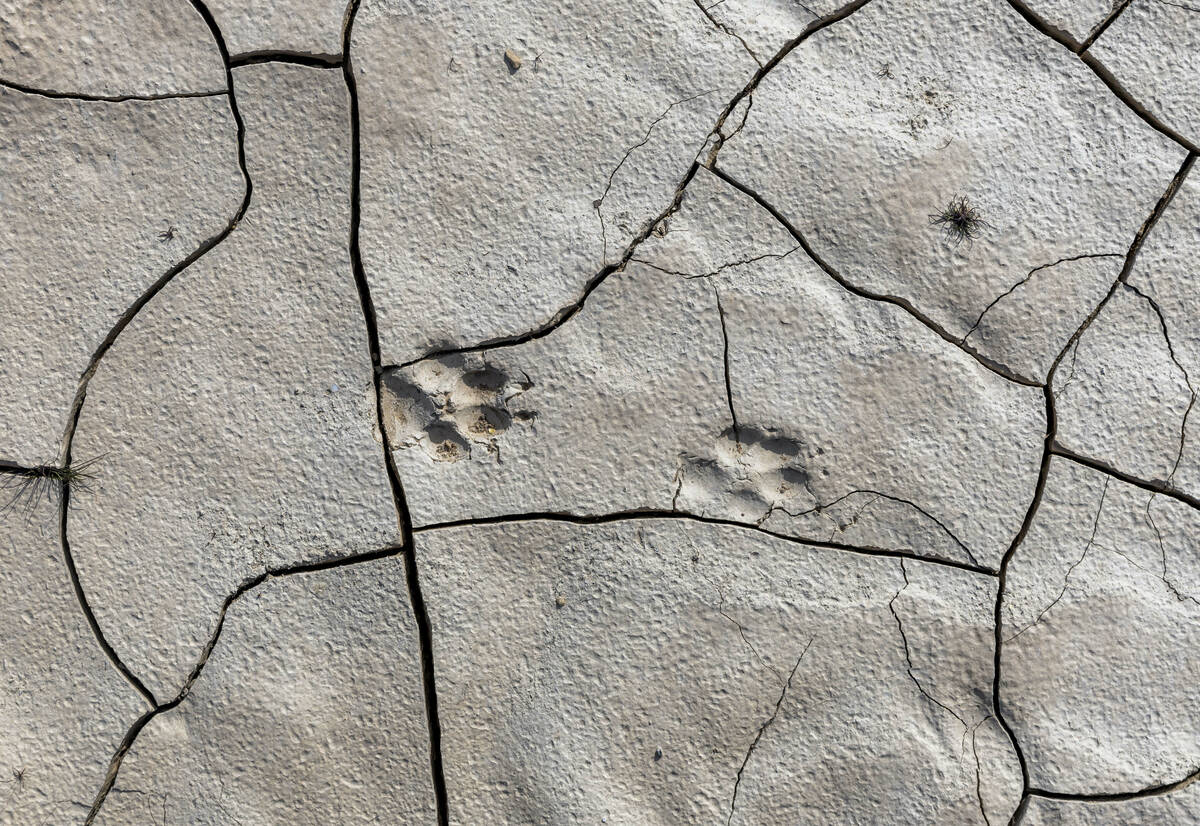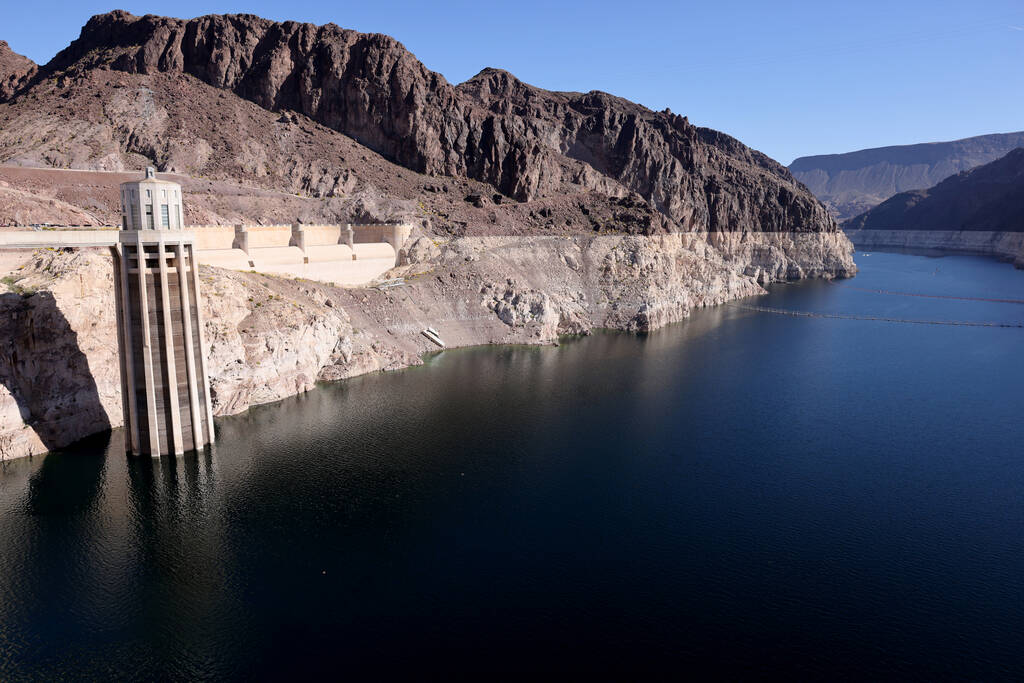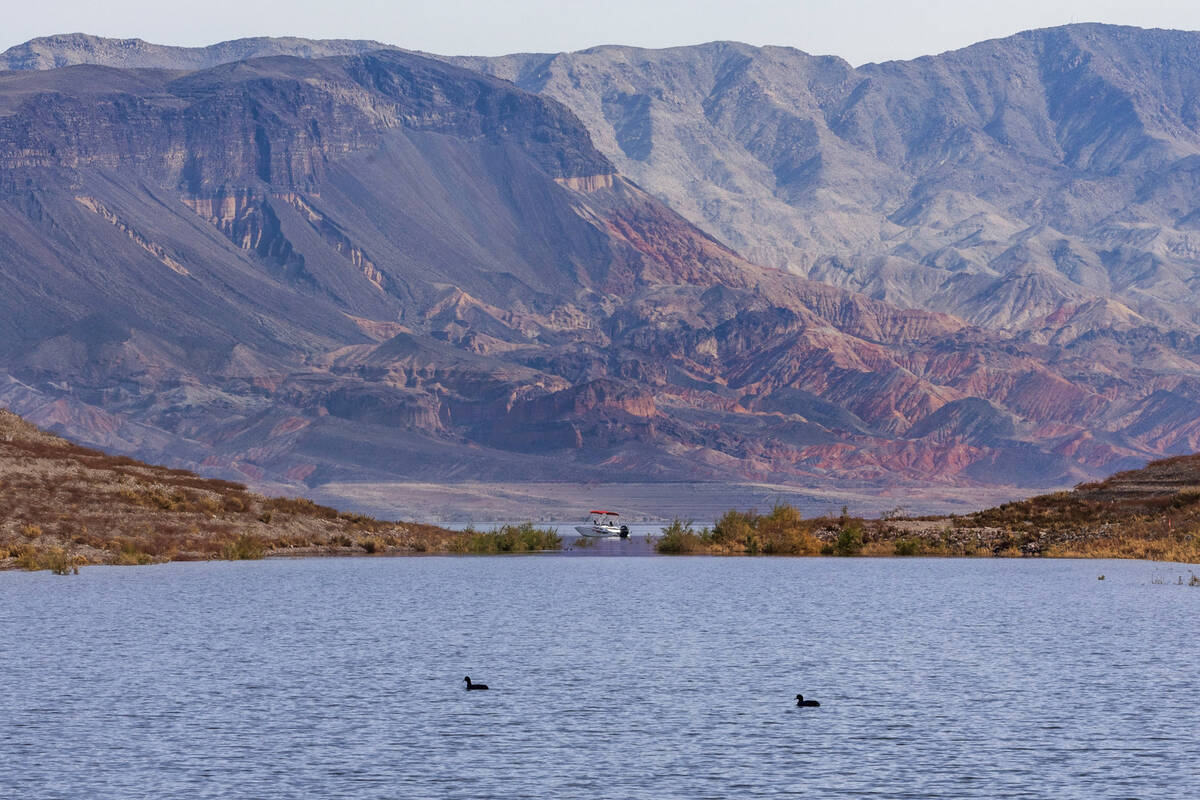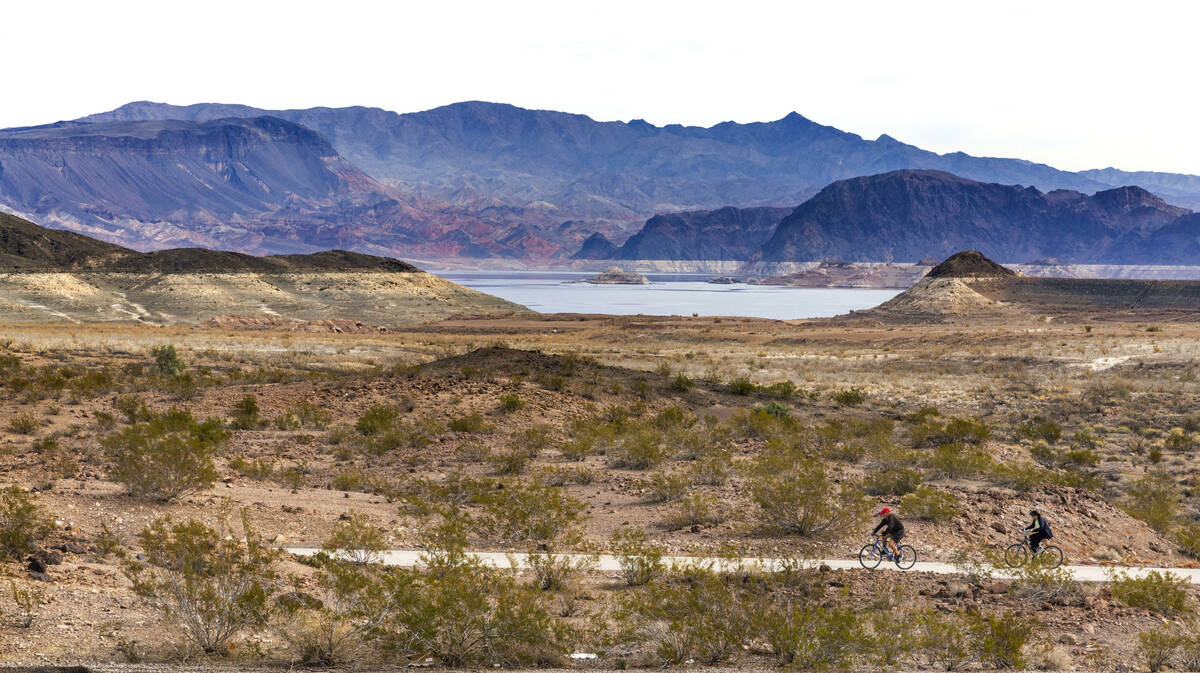‘Not out of the woods’: Lake Mead water levels projected to drop by 2025
Lake Mead, the source of almost 90 percent of Southern Nevada’s water, is expected to near 2022’s historic low by the end of 2025, this month’s Bureau of Reclamation projection shows.
Based on the most likely scenario for Colorado River inflow, federal scientists predict the reservoir will dip to 1,044 feet in December 2025 — just 4 feet higher than the lowest level seen since it was first filled, which was about 1,040 feet in July 2022.
Forecasts that go out further in the future allow for a larger margin of error, and climate conditions largely dictate Colorado River flows. In addition to an estimate on the most probable inflow scenario, the agency releases estimates for a maximum and minimum inflow into the reservoir.
Increased snowpack in the Rocky Mountains made last year a solid one for river levels. But, historically, years with less snow follow, said Bronson Mack, Southern Nevada Water Authority spokesperson.
“We’re not out of the woods,” he said. “One good year doesn’t erase the past two decades of dry years.”
If the reservoir ever dipped below what’s known as the “dead pool” level of 895 feet, it would be unable to release water to the Lower Basin states that depend on it — Nevada, California and Arizona — and parts of Mexico.
That’s a worst-case scenario, but it makes conservation all the more important in Southern Nevada and throughout the Colorado River basin to avoid it in the future, Mack said.
Sweeping changes could come out of August’s two-year projection, which will dictate whether Colorado River states need to reduce water use even more at what’s known as a Tier 2 shortage.
Nevada has been in a Tier 1 shortage since August, meaning the state had to use 21,000 acre-feet less than its usual allowance of 300,000 acre-feet. Preliminary water use totals for 2023 came in way under that number, though, at 188,000 acre-feet, or roughly 89 gallons per person per day.
“The future of the Colorado River is warmer and drier,” Mack said. “It is a future of less water. It’s incumbent upon all of us to make sure that we’re using water as efficiently as possible.”
All who depend on the water Lake Mead provides should be monitoring levels and ensure that they’re following directives about best water-saving practices, said Kyle Roerink, executive director of the Great Basin Water Network.
“For folks who may be hesitant to rip out some turf, put in efficiencies, whether that be for outdoor landscaping, or for indoor use, every drop is going to matter,” he said. “Let this be a warning.”
It’s also important for Colorado River negotiators to keep water levels in mind as they look toward updating guidelines set to expire in 2026, Roerink said.
Contact Alan at ahalaly@reviewjournal.com. Follow @AlanHalaly on X.



